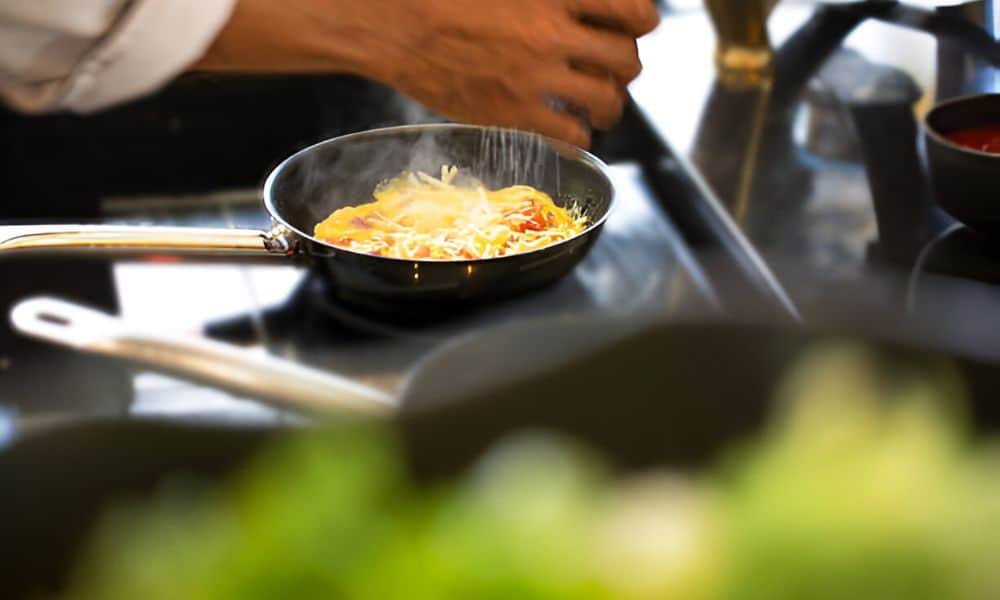One morning, I tried to make scrambled eggs in my shiny new pan. It looked easy. But the eggs stuck. Hard. I scraped and scrubbed for what felt like forever. That mess taught me a lesson. Cooking with stainless steel takes a little know-how. Since then, I’ve learned how to scramble eggs in a stainless steel pan the easy way. No sticking. No stress. Just soft, fluffy eggs every time. In this guide, I’ll show you my method. It’s simple, tested, and works like a charm. Let’s make your next breakfast a smooth one.
Why Stainless Steel Is Different From Non-Stick
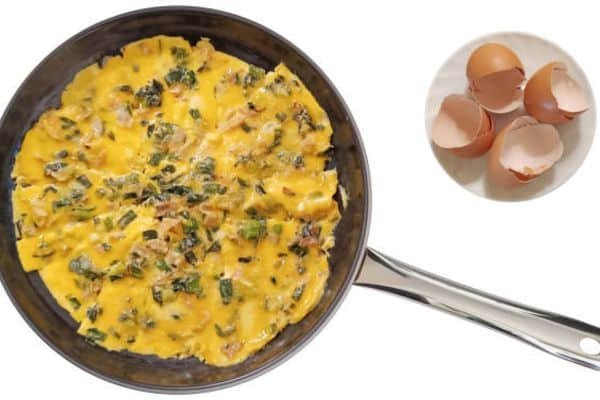
A stainless steel pan doesn’t forgive mistakes the way a non-stick pan does.
Non-stick pans have a smooth surface that keeps food from clinging. Even with little oil, eggs slide around like magic. But stainless steel needs a bit more care. It has no coating, so food can grab onto it fast.
The biggest reason eggs stick? The pan isn’t hot enough. Cold steel and eggs don’t mix well. Preheating builds a layer of steam between the and the food. That steam acts like a shield, stopping the eggs from latching on.
It sounds tricky, but here’s the truth—it’s easy once you know how. Heat, fat, and timing are all it takes. Get those right, and stainless steel works beautifully. I now prefer it. The results are soft, rich, and full of flavor. Better than any non-stick I’ve owned.
What You’ll Need (Keep It Simple)
You don’t need much to make great scrambled. Just a few basics from your kitchen.
- Stainless Steel Pan
Pick one that’s not too big. An 8- to 10-inch pan works well for two to three. - Fresh Eggs
The fresher, the better. They hold together better and taste richer. - Butter or Oil
This is key. Fat keeps the eggs from sticking. Butter adds flavor. Oil works too. I like to use both for the best results. - Spatula
Use a soft one—rubber or silicone. It won’t scratch and makes stirring smooth. - Mixing Bowl + Fork
Beat your eggs in a bowl first. A fork works fine. Whisks are great too, but not a must.
That’s it. No fancy gear. No high-end tools. Just the right, good eggs, and a little fat.
Step-by-Step Guide: How to Scramble Eggs in a Stainless Steel Pan
This is my simple method for how to scramble in a stainless steel —no sticking, no stress.
Step 1: Beat your eggs well
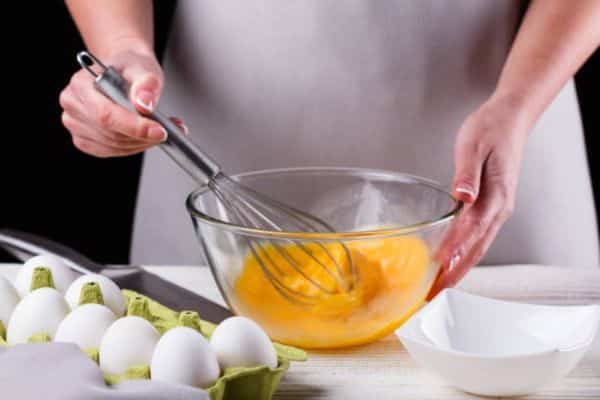
Crack into a bowl. Use a fork to beat them until smooth. No streaks, just a nice, even yellow. Add a pinch of salt if you like. That helps break them down and makes them softer.
Step 2: Preheat the pan (with the water test)
Place the pan on the stove. Set the heat to medium. Wait one to two minutes. Drop in a little water. If it dances and rolls, the pan is ready. If it vanishes right away, it’s too hot—remove the and try again.
Step 3: Add butter and let it melt
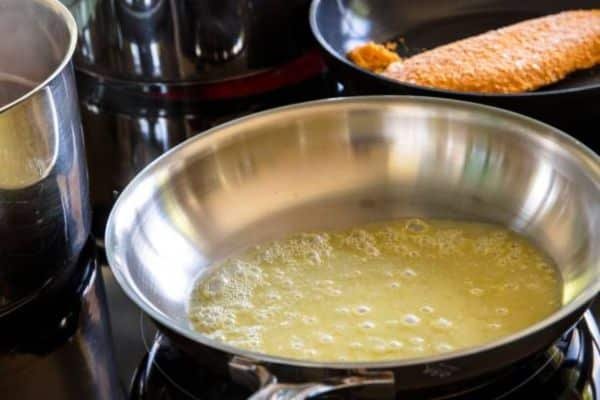
Drop in a spoon of butter. Let it melt and coat the whole surface. You want a soft sizzle—not loud popping. Tilt the pan to spread the fat. This creates a smooth layer that keeps eggs from sticking.
Step 4: Pour eggs and let them set for a few seconds
Pour the beaten eggs into. Don’t stir right away. Let them sit for about 10 seconds. The bottom will start to set. That’s your cue to move.
Step 5: Stir gently, don’t rush
Use your spatula to push from the edges to the center. Go slow. Use short strokes. Fold, don’t mash. Keep the motion light. The goal is soft, fluffy curds—not dry bits.
Step 6: Finish with residual heat

Once the eggs are almost done, turn off the heat. Let the pan’s warmth finish the job. This keeps the texture creamy, not rubbery. In 10 to 15 seconds, they’ll be perfect.
Pro Tips From My Kitchen
I’ve made scrambled eggs more times than I can count. Some were perfect. Some stuck like glue. These tips come from those mornings—both the good and the messy.
Don’t skip the preheat
A cold pan is your worst enemy. Always let it warm up first. Use the water test. It takes just a minute and makes a huge difference.
Stir less, not more
Too much stirring breaks the eggs down. You get tiny, dry pieces. For soft curds, move gently. Let them rest, then fold again.
Let the pan cool before washing
Don’t run cold water on a hot. It can warp the metal. Instead, let it cool on the stove. Then use warm water and a soft sponge.
Add a splash of milk for fluffier texture
This isn’t a must, but I love the result. A bit of milk or cream makes rich and soft. Just don’t overdo it—a teaspoon or two is plenty.
Try half-butter, half-oil for best non-stick results
Butter brings flavor. Oil handles heat. Using both gives you a golden, even coating that resists sticking and tastes amazing.
Cleaning Your Pan the Right Way
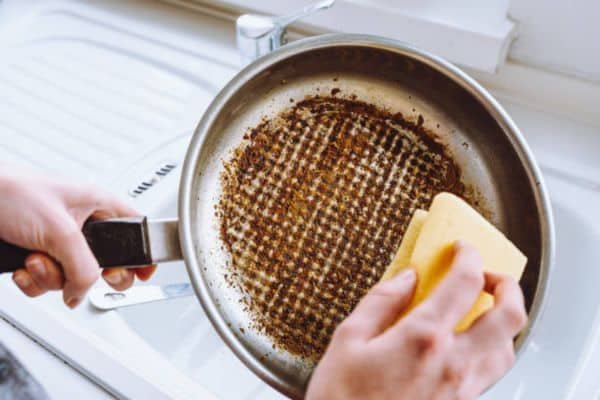
A clean pan cooks better. And it lasts longer too. Here’s how I keep mine in top shape—without hard scrubbing or stress.
Use warm water, no harsh scrubs
Right after cooking, let the pan cool a bit. Then pour in warm water. Let it sit for a few minutes. This softens anything stuck. Use a soft sponge or cloth. Never grab steel wool. It can scratch and ruin the finish.
What to do if eggs stick
It happens, even to pros. Don’t panic. Fill the with warm water and a drop of soap. Let it soak. After 10 minutes, use a wooden spoon or silicone spatula to loosen the bits. Most of it comes off without much effort.
Keep your pan shiny over time
Dry right after washing. Water spots leave marks. For a deep clean, rub it with a paste of baking soda and water. Rinse well and dry. I do this once a week—it keeps the shine and removes stains.
Beyond Scrambled Eggs: Why I Still Love My Stainless Steel Pan
Scrambled eggs may be where it started, but my stainless steel does a lot more.
I use it for sautéed veggies, golden-brown pancakes, and even crispy chicken thighs. It handles high heat like a champ. You get even browning, rich flavor, and great control. Once I got the hang of it, I found myself reaching for it every day.
Honestly, I now prefer it over my old non-stick. It feels solid. It cleans up well. And with the right steps, food just doesn’t stick. I like knowing I’m not dealing with coatings that wear off over time. Just clean, polished steel that gets the job done.
Also, here’s a little breakfast tip. While cook low and slow, you can make the rest of your plate fast. If you’re also into quick breakfasts, check out these Best Air Fryers Under $50—perfect for crispy toast or hash browns without flipping a thing.
Common Mistakes Beginners Make (And How to Avoid Them)
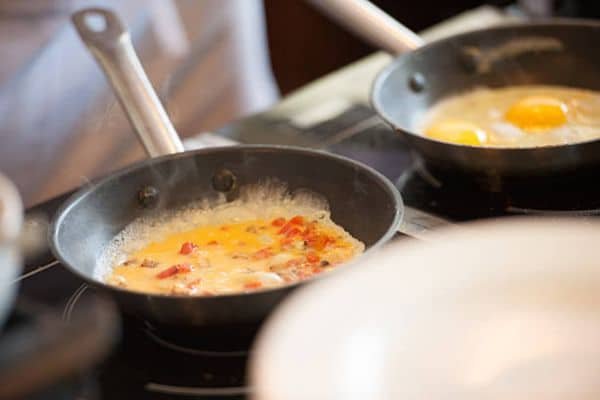
Everyone messes up at first. I did too. The key is knowing what went wrong—and how to fix it. Here are the top mistakes I see, and how to avoid them next time.
Not preheating
A cold pan guarantees sticking. Always give it a minute or two to warm up. Use the water test. It makes a big difference.
Using high heat
Too much heat dries the eggs and scorches. Medium is enough. Low and slow wins the race for soft, fluffy.
Stirring too much
This breaks the eggs into tiny bits. You want gentle folds, not constant motion. Let the eggs set a little, then stir.
Letting eggs sit too long
Once the eggs are done, turn off the heat. Leaving them in too long makes them rubbery. Residual heat will finish the job.
Not using enough fat
Eggs need a buffer between them and the steel. Butter, oil, or both—don’t skip this step. A thin, even layer goes a long way.
Final Thoughts
Scrambled eggs in stainless steel don’t have to be tricky. You just need the right steps—and a little practice.
Preheat Add enough fat. Keep the heat steady. Stir with care. Let them do the work. These small moves make a big change.
I’ve burned, scraped, and soaked my share. But I’ve also made soft, golden eggs that slid out like magic. You can too.
So try again. Start fresh. Trust the process.

